Refurbishing of the Balconies in F: an Intolerable Saga
In the summer of 2023, a project to refurbish the balconies of building F was initiated by the administration, after having completed those of building E. A year later, the work continues amidst dust, noise, and a lack of transparency, raising fears for other planned work by Minto.

Timeline of a Lingering Project
When the work on F began, it was expected to be completed by the end of the summer. In August, the work, which was progressing amid excessive noise and dust harmful to health, was suddenly interrupted as the workers were redirected to another project, leaving the balconies in an unusable state.
In February, the administration announced that the work would be completed in the spring, to begin work on the rock wall behind F, ending in June. The administration also announced subsequent refurbishment work in building A, and work on the facade of building B.
It seems that this plan no longer holds due to the ongoing construction in F, much to the dismay of tenants exasperated by the noise and dirt. A senior project manager who joined on April 25 also announced that it would be the balconies of B that would be next.
A Plan Not Disclosed
At the beginning of summer 2023, the administration informed all tenants of building F that balcony refurbishment work was to start within a week and that everything on the balconies, including wooden tiles, had to be removed. When contacted to confirm which floor the work would start on and when the workers would come by, the reply was that it would definitely be the following week.
In fact, this was not to happen, and the balcony remained unusable for two and a half months before the workers showed up, depending on the floor. It is understandable that tenants who had hastily cleared their balconies were unhappy, having cleared them for nothing while the work seemed reluctant to start. When contacted for a follow-up, the administration claimed they were unable to predict when the work would take place on a particular floor, as the supplier had no plan.
Going directly to the source, a member of the CLR spoke to one of the supplier's foremen who explained that they had provided a plan, but that it was actually a decision by the administration.
A Chaotic and Illegal Confiscation of Property
Several tenants who did not receive the notice, or who did not have the possibility to store all the balcony furniture in their apartment or in storage, had the unpleasant surprise of discovering that workers had taken their belongings without their permission and had piled them up without any organization or precaution on the ground floor, rather than interrupting their work.
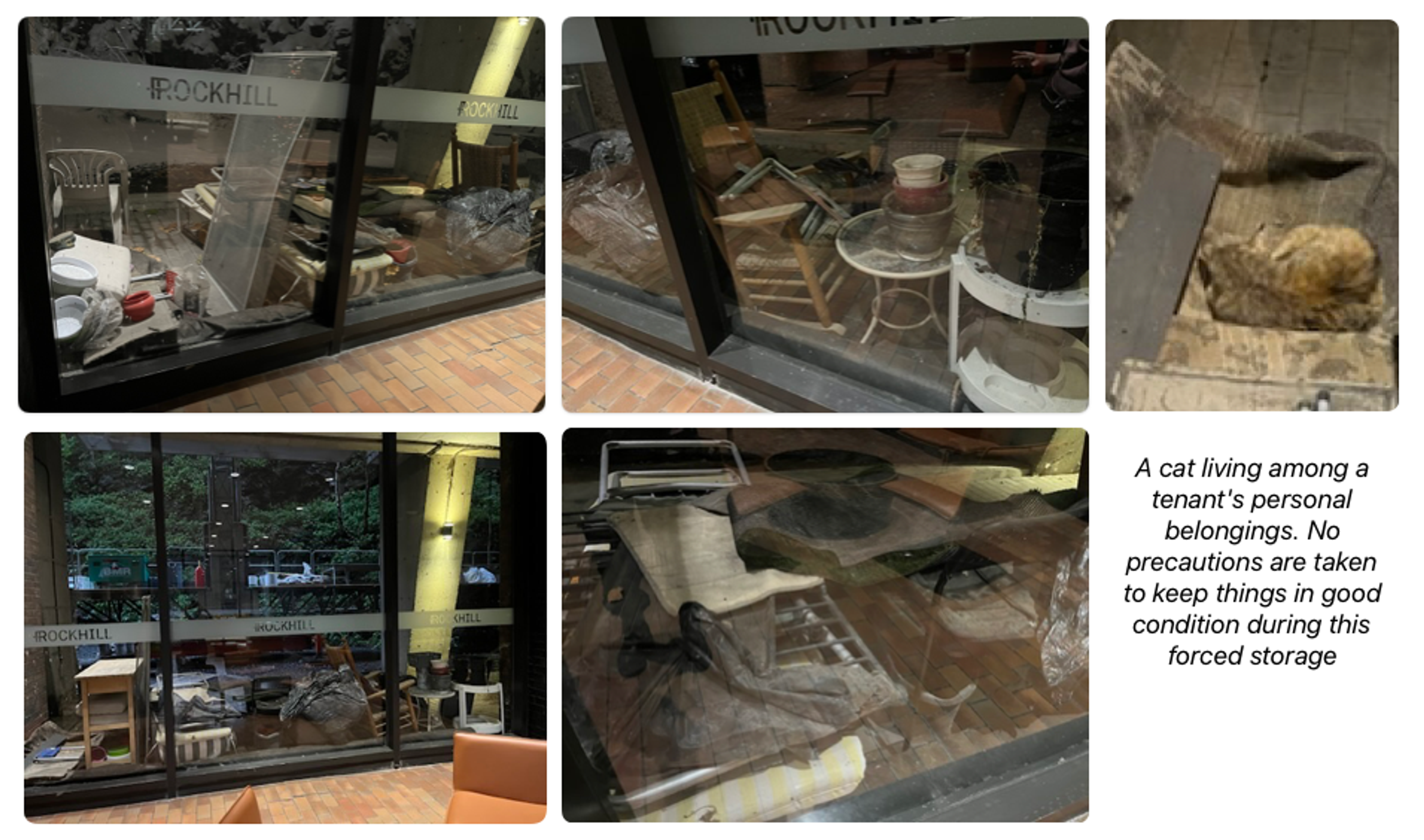
Recently, the administration decided to move an number of items along the exterior wall of the building to make room inside. These items are not secured and are at the mercy of the elements. It is likely that there will be a total loss for the tenants to whom they belong.
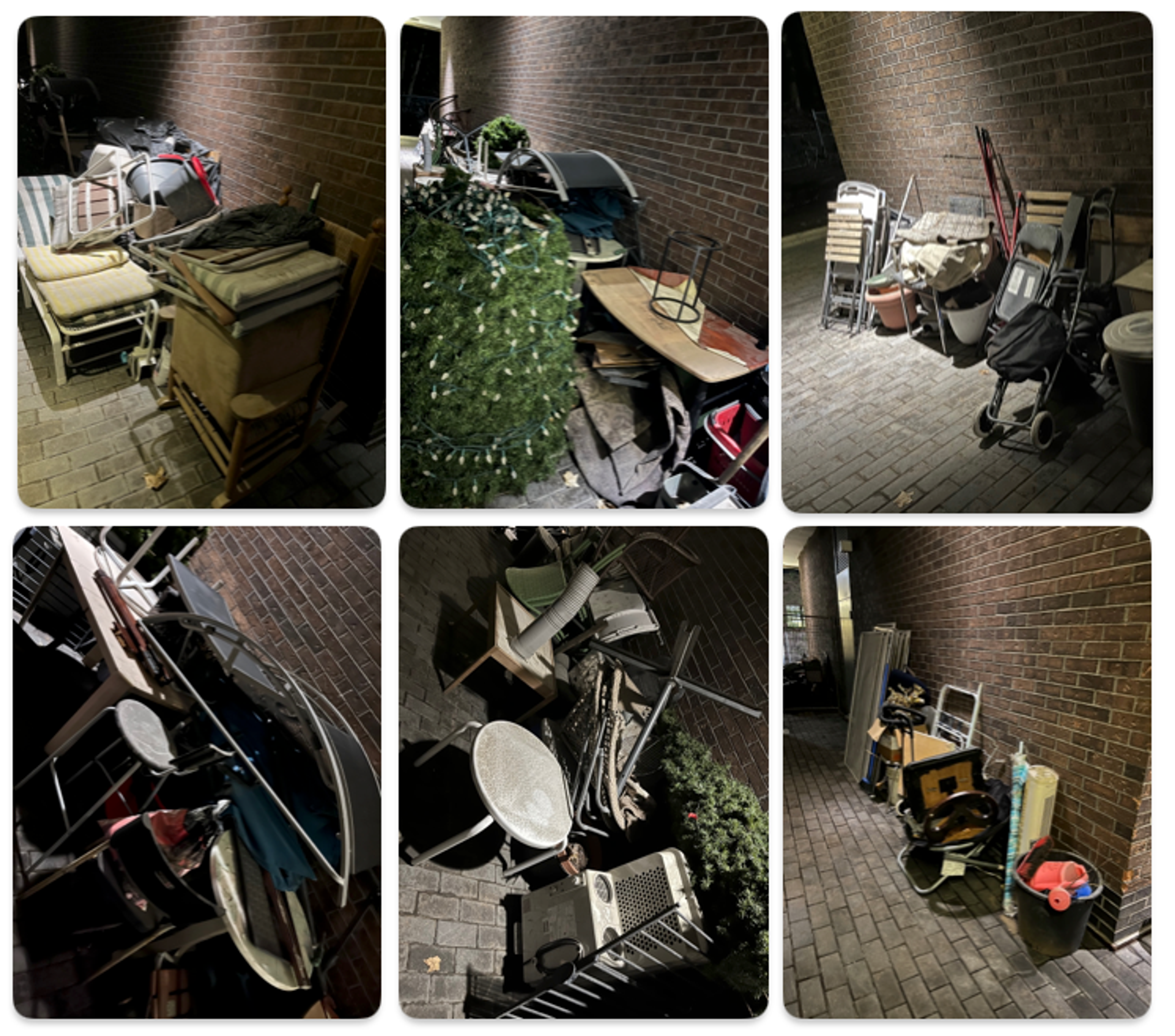
Floor tiles and mosquito nettings are piled on top of each other with no identification of source and very little precautions which has visibly led to damage.
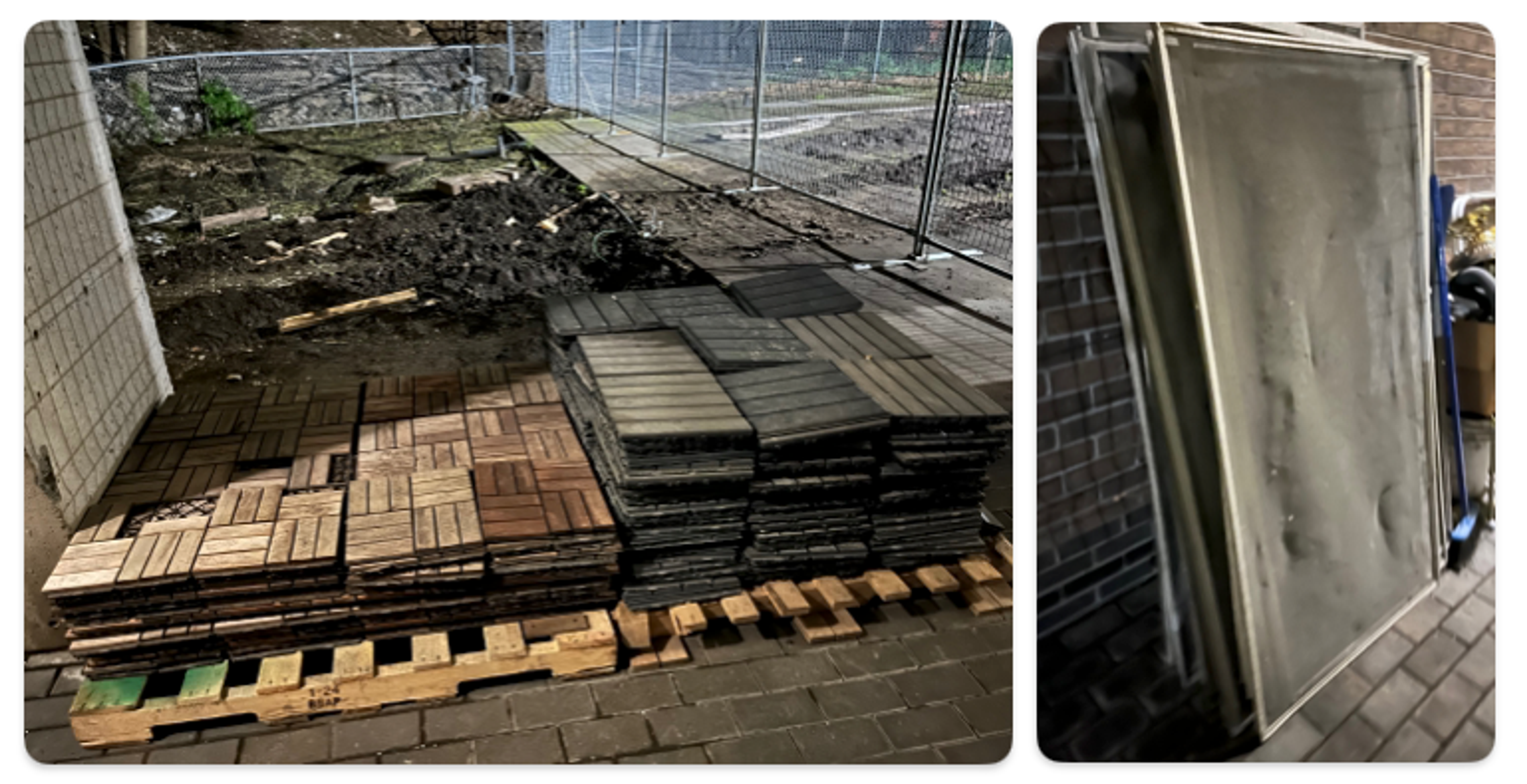
Normally, a spokesperson from the administration should have contacted the tenants to agree with them regarding these effects and the impossibility of using the balcony for storage during the work. This represents not only a lack of courtesy but also a violation of the Charter of Rights, which stipulates that no one has the right to remove anything from the dwelling without the permission of the person living there.
A Dirty Job
Long after the work on the concrete of the balconies, a team appeared without any warning to pressure wash the facades of the renovated balconies. Unfortunately, the technique used resulted in rubble and dust being sent onto the walls and windows.
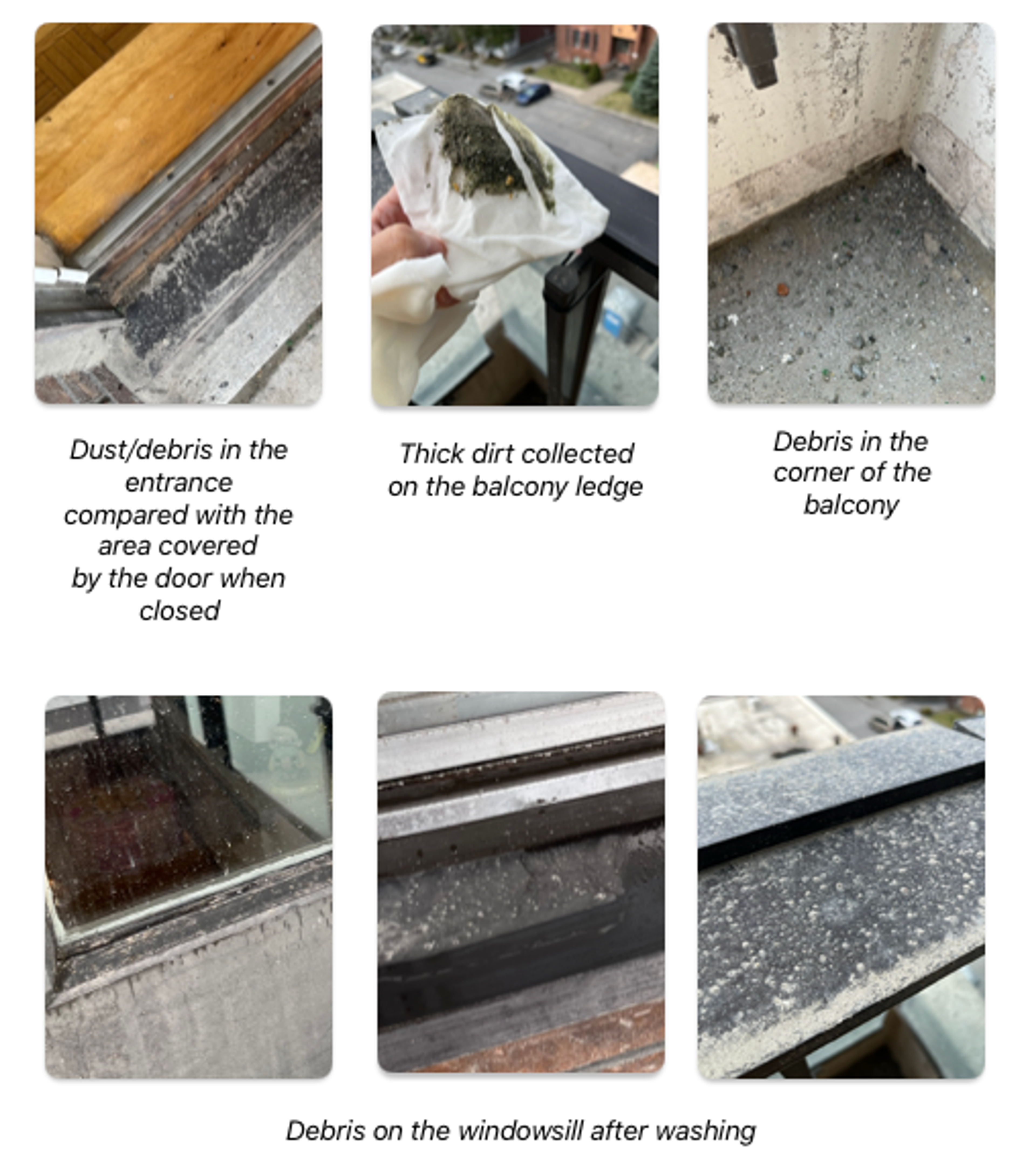
Dirty water coats the windows with dust and even penetrates inside the apartments through poorly sealed frames.
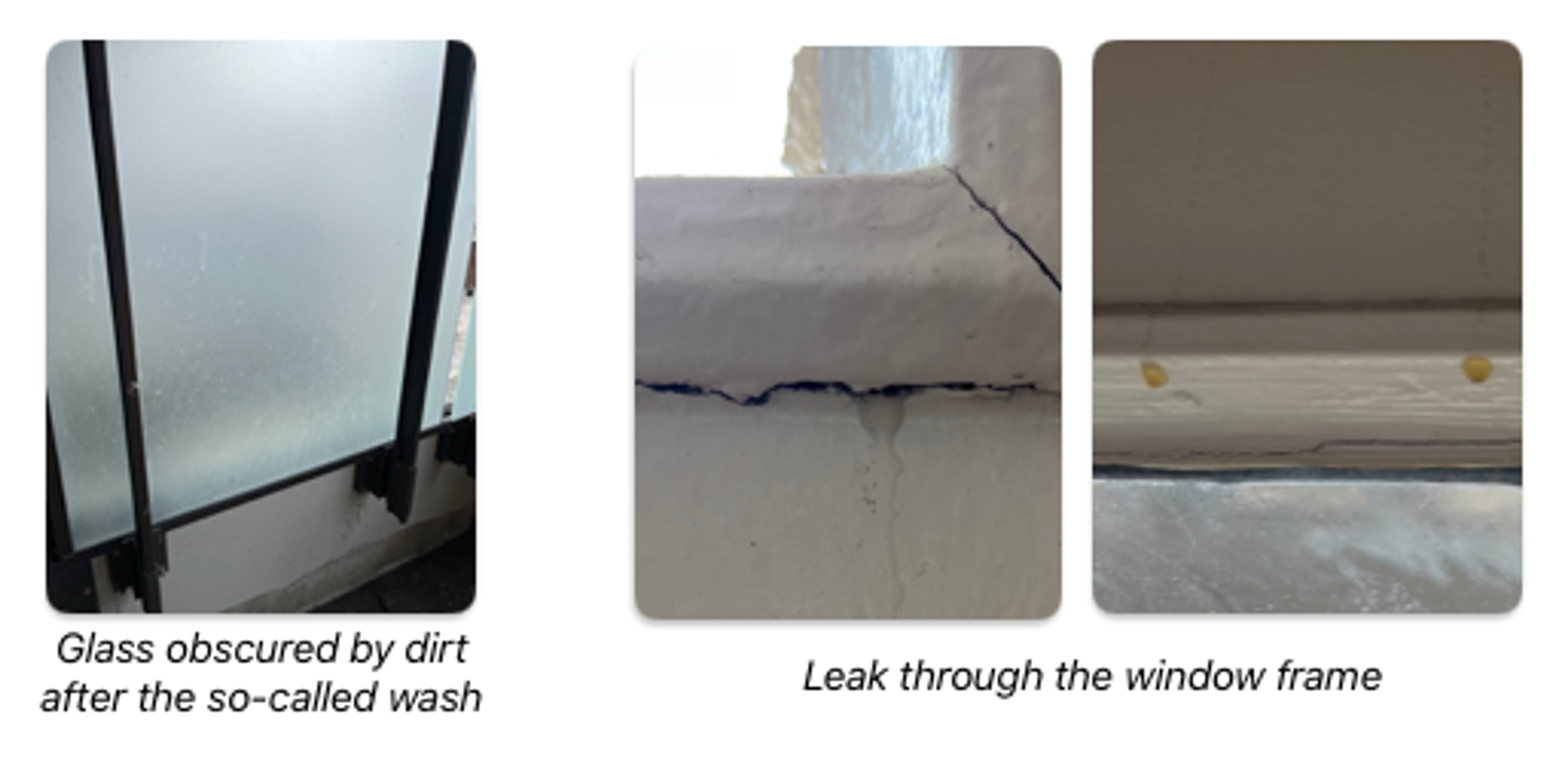
They use an ineffective technique that dirties the walls with a thick layer of dust and debris, requiring the tenant to clean up after the so-called wash. They should have started by directing the jets outward to remove the debris rather than pressing it against the facade.
In addition to leaving dirt, the water jets have a disintegrating effect on the caulking and frames, creating gaping holes through which air rushes in.
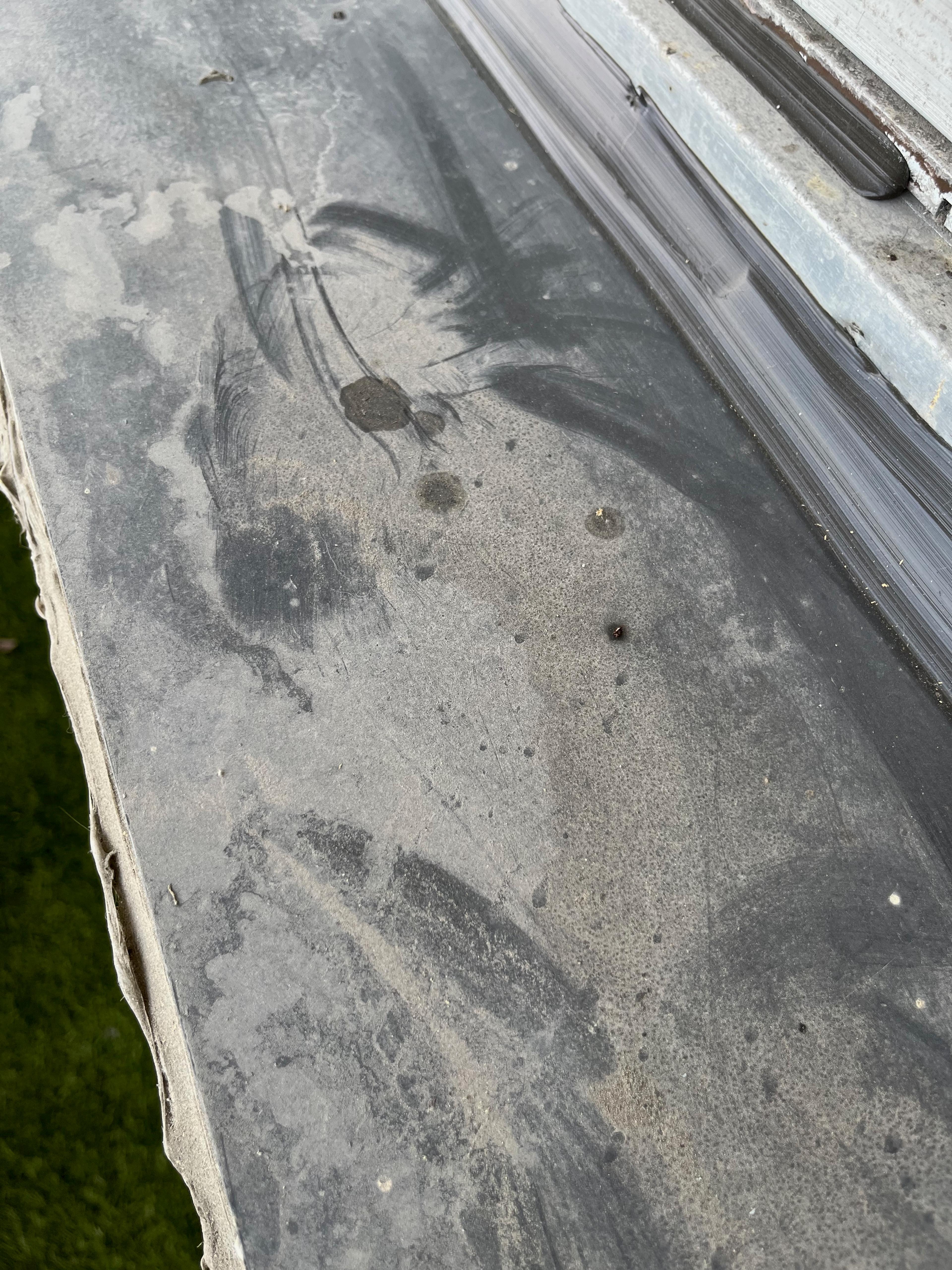

Cement Everywhere
After the teams have gone through, one can notice cement stains on the railings, which are impossible to remove without a special product. Care must also be taken not to damage the paint, which requires a very precise and delicate effort.
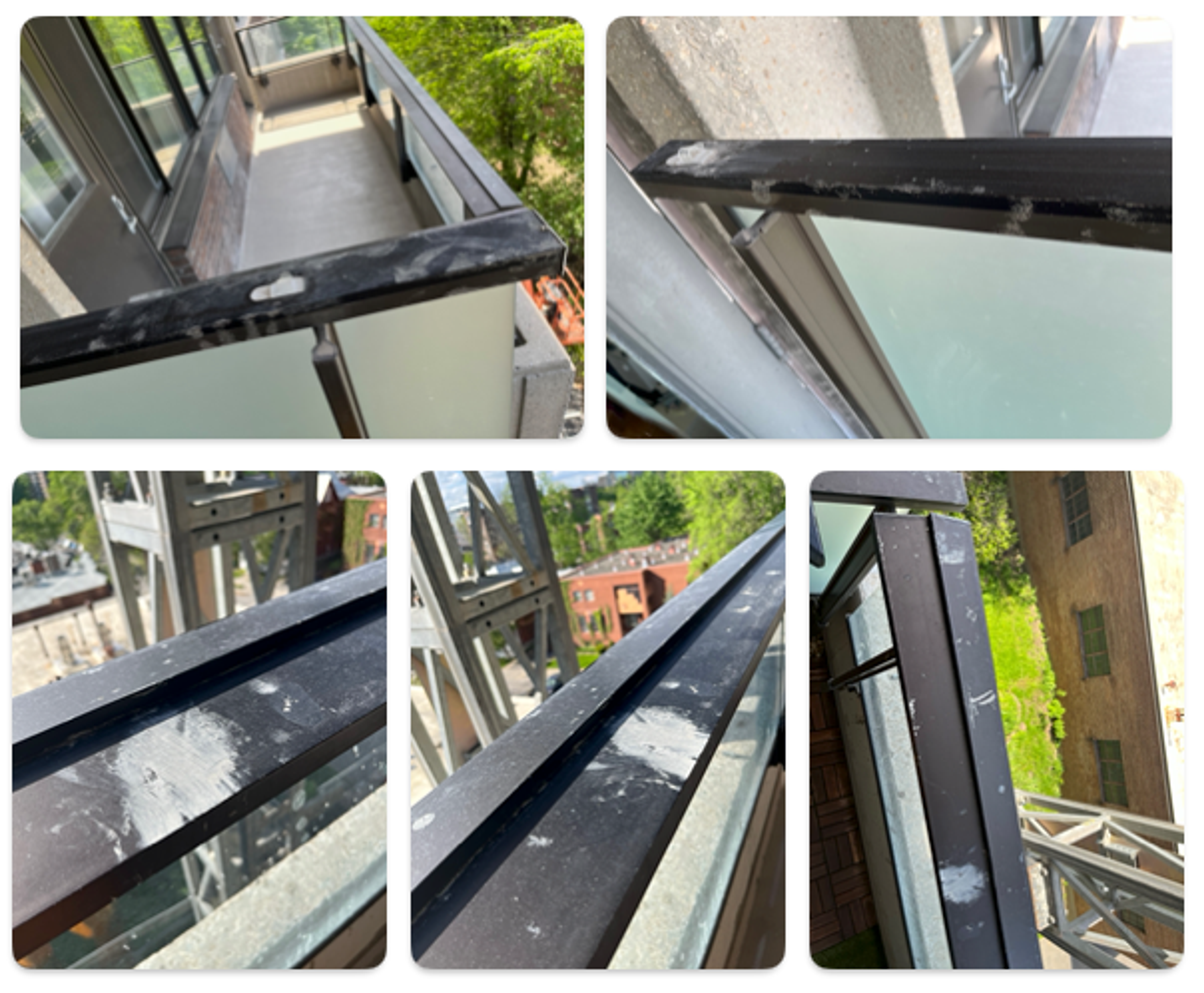
The windows are not spared. We recognize a hand-print in one of them!
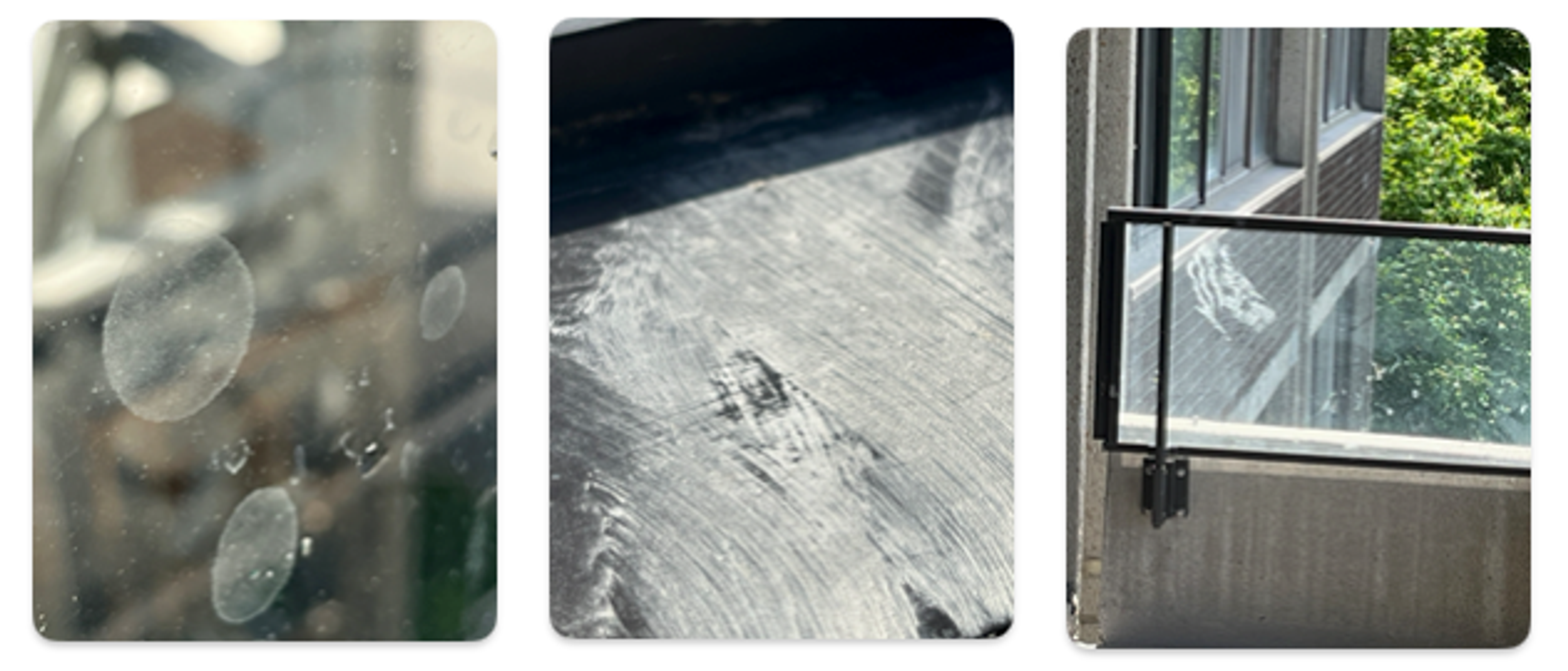
On the ciment, there is a blue residue that is just a difficult to clean off.
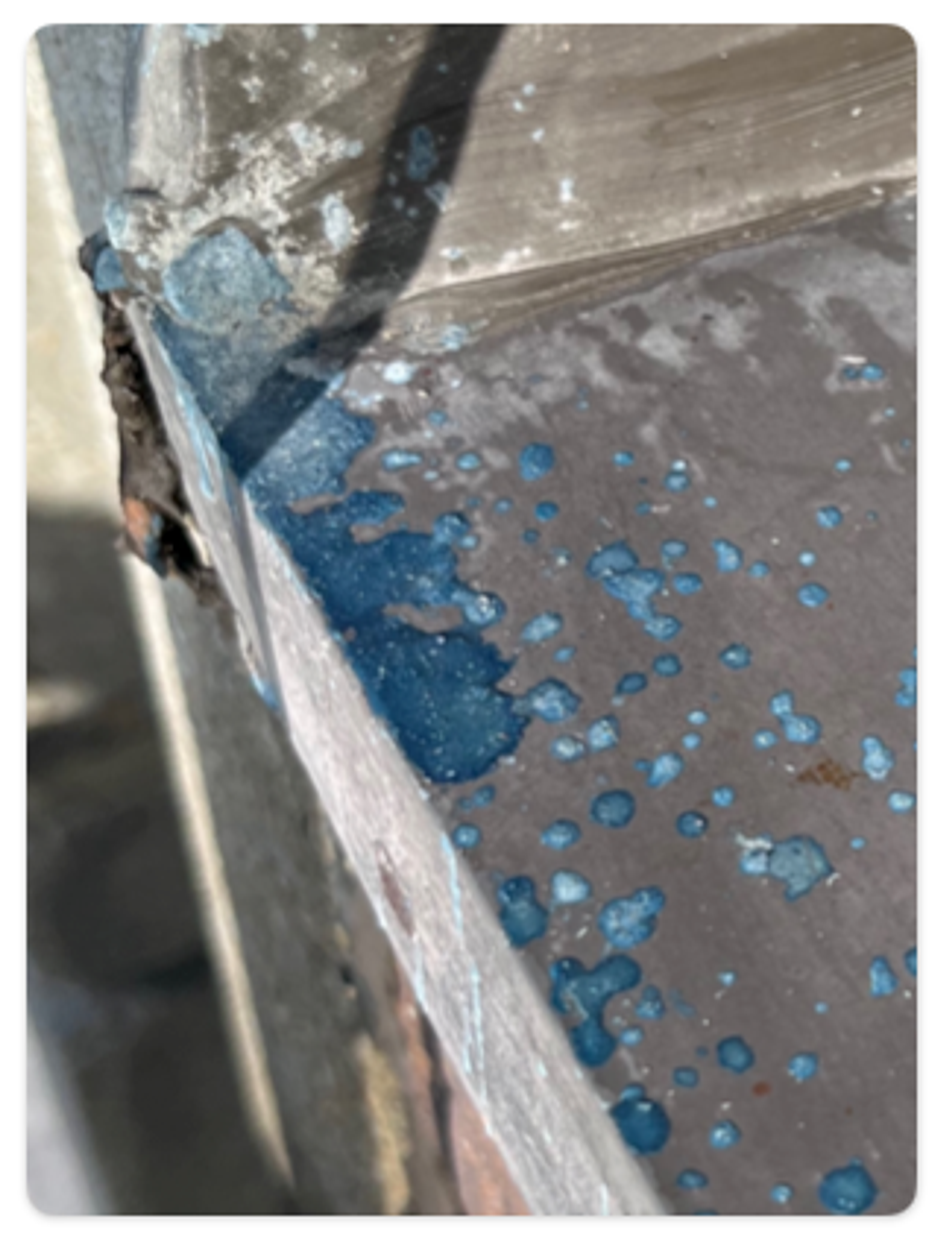
A minimum of quality control would have revealed the problems with the technique from the first balcony, ensuring that the work was done properly for the rest.
The Never-ending Ending
At the end of the summer, the work was suddenly interrupted, leaving all the balconies in an unusable state. According to the supplier, there was a need to deploy the workers on another project.
Recently contacted to understand what was happening given the lack of information from the administration, a supplier revealed to the CLR that they had indeed provided the administration with a floor-by-floor plan of the work, which could have reduced the impact on the tenants.
Possible Recourses
It is clear that the use of the balcony was prevented during the duration of the work. Furthermore, the noise level is well below the city-specified maximum of 60 decibels on the balcony and 45 inside, the lack of window insulation allowing sound to easily propagate inside. (See the City of Montreal noise regulation)
Tenants should therefore be able to request a rent reduction for the duration of the projects, according to case law (See the case of the Olympic village)
In fact, a class-action suit is being intented by some residents of the F building, led by Maitre Émilien Létourneau (still at an early stage), which includes in part this work. There is no necessity to join this, a tenant can make their own small claim at the TAL for a portion of rent according to the loss of enjoyment of the balcony and premises, etc
A Case of False Representation?
When acquiring Rockhill, Minto alluded to easy gains by boasting about recent work on the infrastructure, including the balconies, parking, and common areas.
Since acquiring Rockhill in 2011, Ivanhoé Cambridge has invested significant capital in the property largely into balconies, parking, common areas and landscaping. These investments will reduce maintenance expenditures in the future and allow the REIT to focus on value-add suite repositioning and amenity improvements. This transaction positions the REIT as an important participant in the Montreal multi-family market immediately, which is expected to unlock other future opportunities.
(See the Minto REIT Press Release)
It is surprising that just 3 years later, major work has been undertaken on all these aspects. Did Minto misrepresent the situation to investors? Or could it be that these are unnecessary works aimed at increasing the repositioning rate by driving away tenants, especially those who have been there for a long time, as described in the report for the Office of the Federal Housing Advocate on financialization of rental properties?


